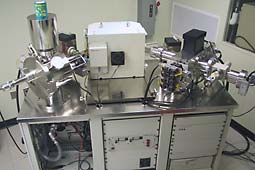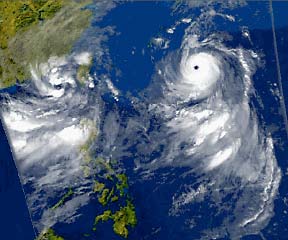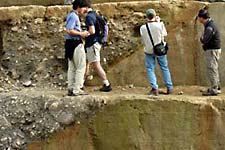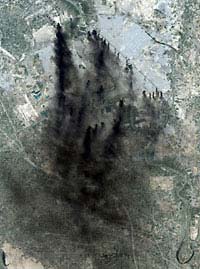Professional activities in environmental science frequently include field excursions
and laboratory research, and preparation for these activities is an important
part of the SeE program. Recognizing that some graduates will pursue career
paths that involve substantial field work while others are more predisposed
toward laboratory-intensive careers, this requirement may be satisfied by 12
units of either a field subject, a laboratory subject, or a combination of
the two. (Note that
the Field/Laboratory Requirement referred to here is not the same as MIT's
General Institute Laboratory Requirement.) Students interested in more intensive
field or laboratory experiences fulfill the requirement by taking one of the
following subjects:
5.310 Laboratory Chemistry (Fall, Spring)

Introduces experimental chemistry for students who are not majoring in Course 5 (Chemistry). Principles and applications of chemical laboratory techniques, including preparation and analysis of chemical materials, measurement of pH, gas and liquid chromatography, visible-ultraviolet spectrophotometry, infrared spectroscopy, kinetics, data analysis, and elementary synthesis.
New! Experimental Investigations of the Charles River (Fall)
This hands-on class will use the Charles River as a natural laboratory to study
environmental fluid mechanics, sediment transport, and the impact that people
have on the river. Students will collect a wide variety of data, including
river bathymetry, velocity, turbidity, temperature and salinity. The resulting
spatial datasets will be analyzed using 3D visualization technology.
12.119 Analytical Techniques for Studying Environmental and Geologic Samples (Spring)

Focuses on analytical facilities that are used to determine elemental and isotopic abundances in soils, rocks, minerals, and fluids. Emphasis is on isotopic ratios Sr, Nd, and Pb, whose isotopic ratios can be used for geochronolgy, and abundances of trace elements such as Rb, Sr, Cu, Cd, Hg, rare-earths, Pb, Th, and U. Analytical techniques include mass spectrometry, emission spectrometry, atomic absorption, neutron activation, and electron microprobe. A major lab project utilizes these techniques to address specific environmental and geologic problems.
 12.159 Sedimentary and Surfical Geology Investigations
12.159 Sedimentary and Surfical Geology Investigations (Spring)
In-depth examination of modern and ancient depositional systems, Earth-surface landforms, and surficial processes, utilizing concepts of process sedimentology and geomorphology, sequence stratigraphy, and sedimentary basin analysis.
12.162 Geological Image Interpretation (Spring)

Emphasizes methods of geological interpretation of remotely sensed image data. Students are challenged with a series of "images" from which the group must, with guidance, draw relevant conclusions about the geology/geomorphology of the area represented. Images selected may include topographic or bathymetric maps, aerial photographs, satellite images, seafloor side-scan sonar images, scenes from Mars, the moons of Jupiter, etc., and include both printed and digital formats - emphasis is on general principles rather than specific applications. Methods of digital image enhancement are discussed. Grades are based on bi-weekly projects: written reports, maps, processed digital images, and interpretive cross-sections.
12.307 Weather and Climate Laboratory (Spring)
A laboratory subject intended to illustrate, by means of hands-on projects, the basic dynamical and physical principles which govern the general circulation of the atmosphere and the day-to-day sequence of weather events.

Real-time meteorological observations are studied together with laboratory fluid experiments. Projects based on real-time observations stress the analysis and dynamical interpretation of the real phenomena, while complementary rotating tank experiments stress planning and testing of ideas in a more controlled laboratory environment. Written critical summaries of the results of each project and oral presentations are an integral part of the subject.
Alternatively, students wanting brief introductions to both laboratory and field techniques may instead take both:
12.120 Environmental Earth Science Field Course (Independent Activities Period)

Introduction to the methods of geologic mapping; practical experience in aspects of environmental geology such as selecting sites for hazardous waste disposal, hazard assessment in seismically and volcanically active areas, and in understanding the three-dimensional character of dissected alluvial deposits. Subject offered according to demand.
and...
12.265J Techniques in Remote Sensing (Independent Activities Period)

A practical introduction to techniques for observing the Earth from airborne and spaceborne platforms. Subject consists of three case studies in ocean, atmosphere, and land studies in which students observe the "end-to-end" process of making remote observations ranging from problem definition, sensor design, spacecraft accomodation, to data collection, analysis, and observation. Offered under the auspices of the Joint Center for Geoscience of MIT and the Goddard Space Flight Center, Greenbelt, MD. Part of subject taught at Goddard where students participate in tours of laboratories, to observe sensor development in progress, mission operations facilities to view real-time data collection, and computational facilities to participate in data processing and analysis.